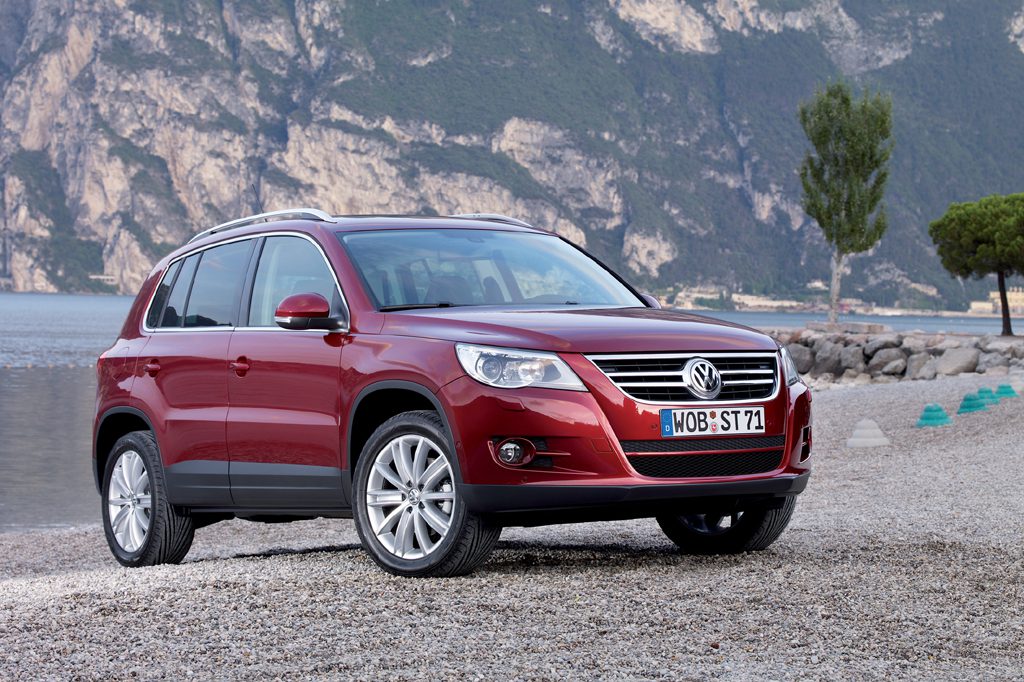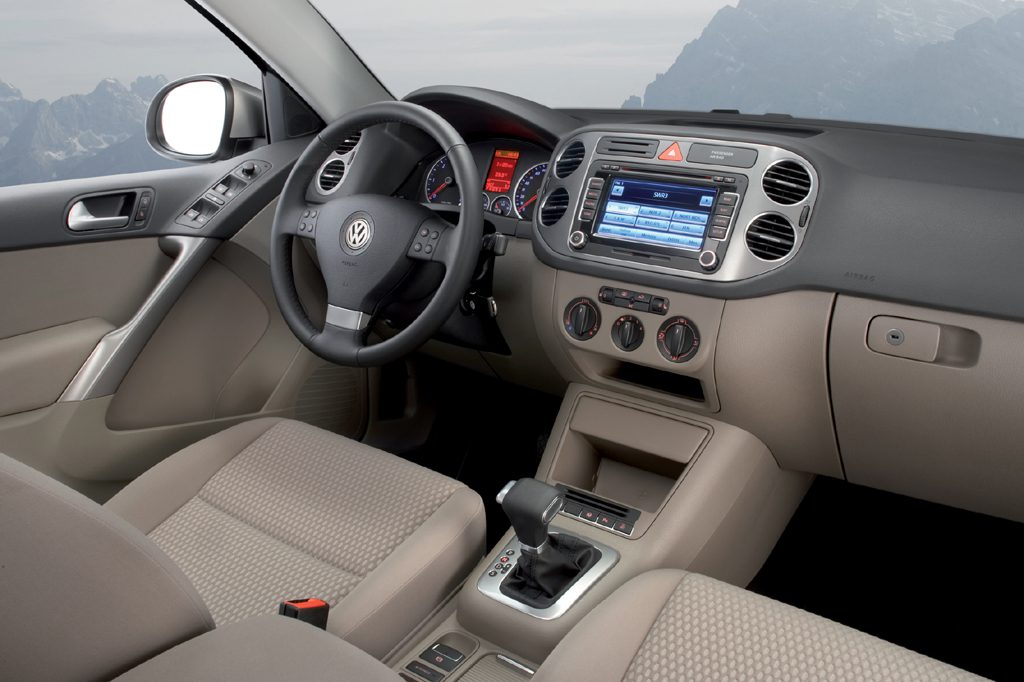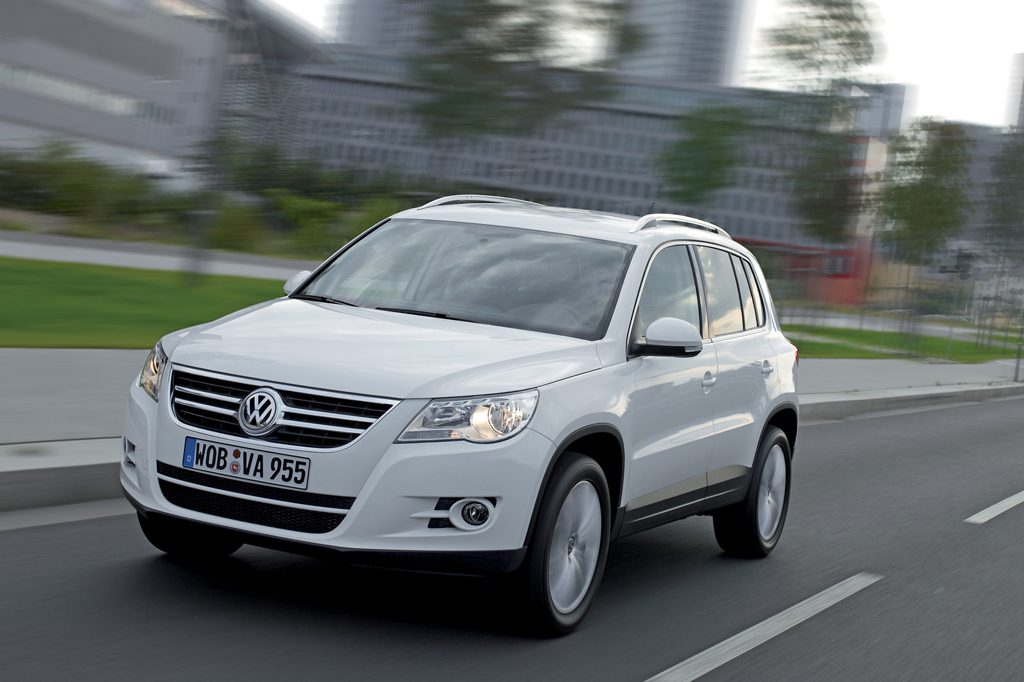| Compact SUV; Built in Germany |
|
|
| Good condition price range: $6,200 – $29,100* |

2009 Volkswagen Tiguan Front

2009 Volkswagen Tiguan Rear

2009 Volkswagen Tiguan Interior

2009 Volkswagen Tiguan Front-2
| Pros: |
|
| Cons: |
|
Volkswagen’s Tiguan is assembled in Germany, and the strength of the euro versus the US dollar may be its biggest hurdle in the American market. Tiguan’s new-car prices have been higher than most compact sport-utility competitors, but resale values have come closer to average. Sporty-for-the-class road manners and a comfortable interior help earn Tiguan a Best Buy label. Don’t overlook the basic front-drive S model, which has the fewest frills but the lowest price-new or used.
Overview
Introduced for 2009, the new Volkswagen Tiguan was this German automaker’s first compact sport-utility vehicle, joining the larger Touareg. “Tiguan,” according to Volkswagen, signified tiger plus iguana. Seating five, this four-door wagon was powered by a turbocharged 200-horsepower 2.0-liter four-cylinder engine. Built on a combination of Golf/Jetta and Passat platforms, Volkswagen’s Tiguan was available in S, SE, and SEL trim levels. All models were offered with front-wheel drive, but all-wheel drive was available only on the SE and SEL editions. A six-speed automatic transmission was standard on all but the S, where it was an option to that model’s standard six-speed manual gearbox. Standard safety features included antilock brakes, traction control, an antiskid system, front side airbags, and curtain side airbags. Rear side airbags were optional. A fold-flat front passenger seat was standard, and reclining second-row seats slid fore and aft. Available features included a navigation system with a rearview camera, a sunroof, and a 30-gigabyte hard drive to store data and digital audio files. Rivals included the Honda CR-V, Toyota RAV4, Ford Escape, Subaru Forester, and Saturn Vue. Marketers even considered the more costly Acura RDX, Land Rover LR2, and BMW X3 as potential competitors.
Yearly Updates
| 2010 Tiguan During the 2010 model year, the Tiguan lineup added a new Wolfsburg model to replace the mid-level SE. |
| 2011 Tiguan The 2011 Volkswagen Tiguan lineup revived the SE model to replace the Wolfsburg. |
| 2012 Tiguan The 2012 Volkswagen Tiguan got freshened styling and some added standard features. |
| 2013 Tiguan All 2013 Volkswagen Tiguans gained an electronic parking brake, leather shift knob, and a leather-rim multifunction steering wheel. The mid-level SE trim also added a partial power passenger seat (electric backrest adjustment), while the top-range SEL now included a full-power passenger seat with position memory, plus a rearview camera. |
| 2014 Tiguan The 2014 Volkswagen Tiguan added a new R-Line model with sport suspension, 19-inch alloy wheels, and specific interior and exterior trim. SE models were now available with VW’s Car-Net communication system/smartphone app. |
